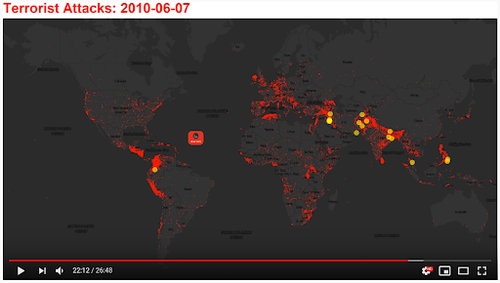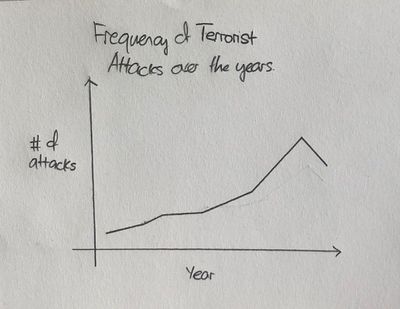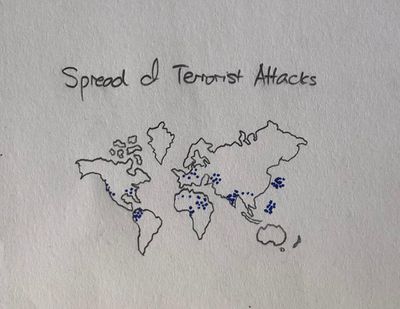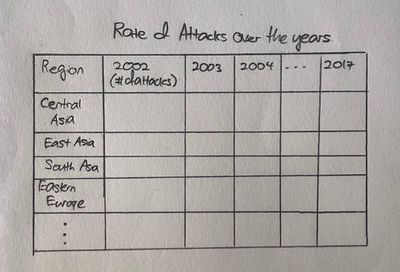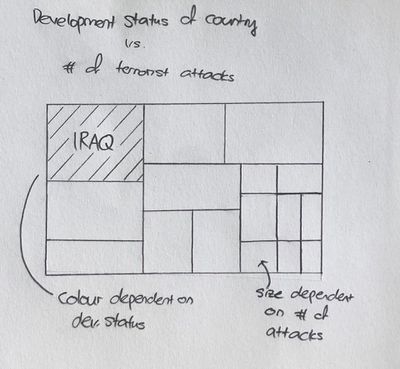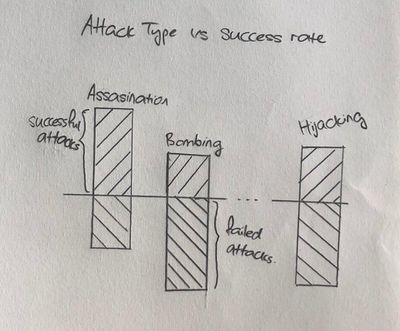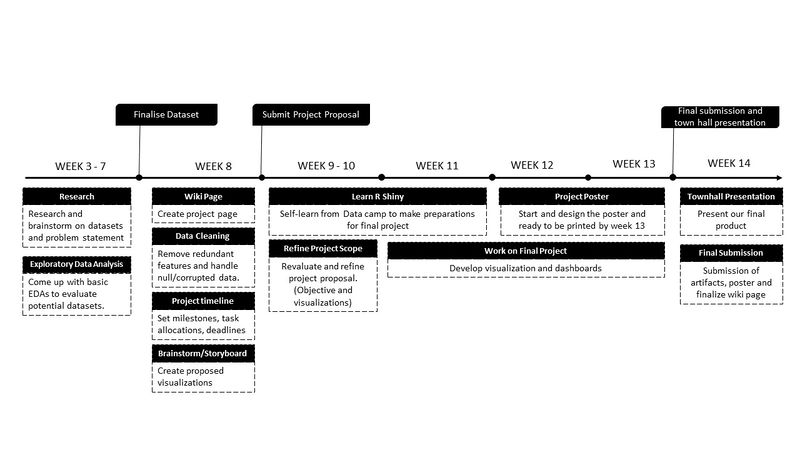Terror: Proposal
Terrorism has been a salient topic since the 9/11 terrorist attack on New York City’s World Trade Center. This terrorist act has altered the security landscape and prompted governments to increase their efforts in tackling the threat of global terrorism. Acts of terrorism have since become more frequent, with the formation of certain terrorist groups such as the Islamic State of Iraq and Syria (ISIS) and Al-Qaeda. Even with heavy investments in efforts to eradicate the threat, terrorism remains prevalent, with an ever-increasing threat to our lives. As such, we turn to analyse past data on terrorism to draw insights and potentially identify patterns behind terrorist acts, so that governments can be better able to combat terrorism.
Main objectives that we hope to achieve through this project:
- Gain overall insight on the frequency, spread and rate of global terrorism acts over a time period.
- Identify and better understand any patterns and trends of global terrorism acts among regions.
- Identify possible main factors that might lead to terrorist acts.
- Identify any possible linkages, implications or impacts from terrorist acts.
- How global terrorism is affected by various factors.
The datasets used for this project:
- The Global Terrorism dataset contains terrorist acts from all over the world across a span of 47 years from 1970 to 2017. It contains 135 columns and 181,691 rows. Each row represents a terrorist act and each column describes the characteristics/features of a terrorist act.
- Gross National Income_per_capital dataset contains the countries' development status from 1987 to 2018. It contains 14 columns and 2222 rows. Each row represents a country's development status and each column represents a year.
- World Governance Indicator dataset contains countries' indicators from 1996 to 2017. It contains 23 columns and 7705 rows. Each row represents a country and a specific indicators. Each column represents a year.
In our analysis, we will only be including terrorism data from the year 2002 to 2017. The purpose of choosing the selected data are as follows:
- With rapid transformation due to globalisation and technology advancement, using data that is too long ago (1970 to 2017) is not a good representation in today's context. Hence, we have decided to use data from 2002 onwards and scrape away data that is from 1970 to 2001.
- In addition, by using terrorism dataset that is 2002 onwards, we are aligning with other datasets timeline. (Country's development status dataset contains data from 1987 to 2018 and Country's governance indicators dataset contains data from 1996 to 2017.)
| Dataset | Data Features | Purpose |
|---|---|---|
| Terrorism (https://www.start.umd.edu/gtd/) |
|
Main source of data that can bring us the information about terrorist attacks that happened around the world |
| World Bank’s GNI per capita (https://datahelpdesk.worldbank.org/knowledgebase/articles/378834-how-does-the-world-bank-classify-countries) | Countries and their development status in each year based on GNI per capita (eg: high income, high medium, lower medium, low income) | Provides information of the development status in terms of GNI per capita across different years. This allows us to compare if the development status of the countries plays a part in the terrorist attacks |
| Worldwide Governance Indicators |
|
Provides information on each country’s level of governance across different years. This allows us to compare if the level of the |
| Related Work | Description |
|---|---|
|
Time Lapse of Global Terrorist Attacks: 47 years of Terrorism |
Example |
| Example | Example |
| Example | Example |
The following show the proposed storyboard that we designed during our brainstorming sessions:
| Sketches | Description |
|---|---|
|
Frequency of Attacks across the years |
Explanation of Sketch |
|
Spread of Attacks |
Explanation of Sketch |
|
Rate of Attacks
|
Explanation of Sketch |
|
Country's Development Status vs Number of Attacks |
Explanation of Sketch |
|
Attack Types against Success Rate |
Explanation of Sketch |
| Key Technical Challenges | Solution |
|---|---|
|
Data Preparation (Cleaning and Transforming) |
Work together as a team to think of the logical way to produce the right data output after doing data cleaning and data transforming through the use of R tools such as tidyr and plyr |
|
Unfamiliarity in Programming using R especially on R-Shiny |
|
|
Unfamiliarity of using the Visualisation Tools |
Work together as a team to help one another along as we face issues while using the visualisation tools. Moreover, we will self-learn the tools ourselves by researching on them. |
|
Unfamiliarity in implementing Interaction and Animated activities in the Visualisation |
Do a sketch prototype of our storyboard or the user interaction’s process of how to use the visualisation. We can also assign one of our team members who are good at UI/UX to assist and teach us the skills he has adopted. |
| Name | Comment |
|---|---|
| Name | Comment |
| Name | Comment |
